Sell More Faster, Part 2: Proving your W3 through the Customer Development Process
Oct 19, 2020

Amos Schwartzfarb, author of Sell More Faster and Managing Director of the Techstars Austin Accelerator, explains why clearly knowing your customers' W3 (Who, What, and Why) is critical for startups to successfully build and scale their sales team.
This article is the second in a three part series. Read Part One and Part Three for more details about how to Sell More Faster.
Want to get to work on your own W3 framework? Check out this learning module on The Entrepreneur's Toolkit.
The next step in building a highly scalable sales organization is to prove (with data) your W3 theory through the Customer Development process. To do this, it’s first important to understand the difference between Sales and Customer Development. This is an important distinction, and until you’ve gone through at least one full customer development cycle (and likely more) to largely prove your theory, you are not ready to start selling at scale. Here is how we will define the two:
Sales: The exchange of goods or services for an amount of money or its equivalent (Websters definition).
Customer Development: The practice of gaining customer insights to generate, test, and optimize ideas for products and services through interviews and structured experiments. (That’s Steve Blanks definition and I mostly agree).
I think Steve is missing one crucial element, which is getting people to exchange real value (and ideally pay) for early versions of your product (including your MVP). The reason this is critical is because it’s really easy for anyone to offer up ideas (even great ones) but until someone is willing to exchange value (money, time, or information) there is no proof they or anyone else will.
Your company is not ready to go from Customer Development into Sales until you clearly know your W3, and it’s been largely proven through the Customer Development process with data to back it up. You must have strong conviction with proof of: who your customer is (also known as Ideal Customer Profile or ICP), you must know what they are buying, and you must know exactly why they are buying it. Additionally, you (and your customers) should have a well-defined and repeatable understanding and way to measure the value transfer.
Once you have this proof, you are ready to build and scale your sales team. Until then you are in Customer Development mode.
Another reason this distinction is important is around hiring. The profile of someone who does sales vs. someone who does customer development is pretty different. We’ll spend more time on hiring in a later post but here are a couple of quick differences between the two.
Sales People:
Need a defined customer profile
Need a defined sales process
Need pricing to be defined
Compensation is typically commission driven and title sensitive
Asks lots of questions focused on closing deals
Will close all business possible regardless of value fit
Customer Development People:
Help identify and define the customer profiles
Help identify and define the sales process
Help figure out and define pricing
Compensation is typically base and tied to company performance and rarely title sensitive
Ask lots of questions focused on understanding value transfer and understanding customer needs
Will walk away from prospects where there isn’t a clear value fit
In Part One we used the W3 framework to identify the Who, What, and Why. In this article we will take that work to test and prove it, it in the real-world, through the Customer Development process.
Read our interview with Amos about his book, Sell More Faster.
Before we get into the work, I’d like to share one personal example to help set context for why the Customer Development process is so important. I joined BlackLocus in early 2012 as Head of Sales. Blacklocus sold competitive pricing and assortment analytics to online retailers. In theory, anyone with an online retail presence could use our product. When I joined the company, they had already hired a seasoned and good, later stage, sales person (we’ll call him John). John had closed roughly 15 customers when I joined. As task #1, I tried to determine our W3. After speaking with John, some customers, our CEO, and our Head of Product, it was still unclear to me WHO our ICP was, WHAT the customer was buying or WHY they needed our product. Until that point, John believed he should be able to sell to anyone with an online retail presence because the value proposition was relatively similar and by itself should persist. While John did a good job closing several early customers, Blacklocus was caught in a vicious cycle of (many) unhappy customers who were churning as fast as John was acquiring new ones. We didn’t have a clear picture of our WHO, we didn’t really understand WHAT our customers were buying (only what we were selling) and therefore no idea of WHY customers were buying. The customer profiles were all over the map, making it impossible to triangulate on a WHAT OR WHY they were buying (or not buying).
When I joined, I didn’t have a strong opinion of our W3. I understood what we were selling but I wasn’t really sure what customers were buying and therefore had no idea why they bought (or how they would measure success). I spent the first 3 months questioning everything and talking to both existing and potential customers of all sizes, industries, experience, location, etc. I even went outside retail, simply to try and disprove our theory about our ecommerce focus. You can see the exercise below for examples of the types of things you can question (but really, I mean everything).
In that three months, I was able to narrow down our W3 and define it clearly as: Large retailers with over $50M in revenue who had a strong online presence. Taking it further, I learned that we should be targeting retailers whose products were hard goods and often commodity items. The reason we learned this was because commodity items and typically hard goods had more clearly defined and easier to identify competitor sets and had tighter margins for our customers. Those two things combined made our impact on their business bigger and easier to measure.
Finally, I learned that if the company didn’t have a role whose job was specifically focused on pricing analytics, the likelihood of a successful sale or implementation dramatically decreased. There are two primary reasons why this is an important characteristic. First, simply by a company centralizing their pricing efforts, it demonstrated that the company put a high value and prioritization on optimizing price and margins. Second, by centralizing their pricing efforts, it meant I had one main buyer vs a decentralized model where there would be many people we’d have to convince we could do an aspect of their job faster and with more accuracy. The fact that I had less people to sell to and the importance the organization put on the effort could decrease the time to close by 6 months or more!
Next, I learned what our customers wanted and were buying, which was ‘competitive insights’ for their highest valued/velocity items. This was different than what we were selling (pricing analytics for their entire catalogue), and while the product was mostly the same, it changed how we should be pitching Blacklocus.
Next, understanding the WHO and WHAT led me to the WHY, which was at a macro level almost always the same (to price competitively against competitors). However, it almost always varied from a single competitor, a series of competitors, OR in some cases just Amazon.
Finally, understanding the WHY gave me the ability to develop a system to measure value transfer so that our customers (and us) would understand the direct monetary impact to their business.
At the point which we figured this out, our revenue was roughly $10K in MRR. Within 6 months our revenue jumped to over $120K in MRR because we knew exactly who to sell to, what they were buying, and how to articulate the value to their business. In our case, we nailed the ICP so quickly and directly that in less than a year from identifying our ICP, we sold the company to The Home Depot for over $50M on less than $1.5M in annual revenue.
A few things I want to point out:
Three months felt long - CEO and Board were initially concerned about halting growth.
Three months in fact was short and we listened well.
Had we not gone through this process, we would have continued to sell SMB’s and had high churn, low revenue, and no exit.
A common pitfall here, especially with early sales, is you get a few prospects to say “yes” and pay you. You may close 5, 10 or more customers (depending on the potential size of your ICP pool) so you start ramping sales. This is the time to stop and question everything. Confirmation bias can be one of the most dangerous things for a sales team—your job at this point is to disprove that your ICP theory is correct! Once you start seeing some real traction, it’s time to go back to your theory and ask yourself “why you might be wrong,” to see if you can disprove it and/or find limitations. If you can’t disprove your theory, then you have directional indicators of Product Market Fit and are ready to start test scaling your sales team. If you are a B2C company, the same principles apply. You may get really good at bringing people to your site or downloading your app but then usage falls or the value your users find is much different than what you believe it would be. B2C is only more complicated, in that you’ll need to spend more time understanding in-depth dynamics of usage and repeat usage to truly nail your ICP.
All too often founders reject this idea. They believe that by limiting their ICP early on or questioning early positive signals, they will limit their full potential and/or ability to scale quickly. I’ve personally been here dozens of times, both directly and with my investments, and my experience says the opposite—which is that maniacally focusing on identifying and proving your ICP is crucial in scaling long-term customers and building a sustainable business.
Now it’s your turn to start the Customer Development process. We will break this into five steps:
Create a list of initial targets. This should be a combination of warm introductions and people you do not know.
Create a list of questions you need answered and data you need to collect to support your W3 theory.
Schedule interview/meetings.
Collect and analyze the data.
Ask questions
Close beta customers
Ask more questions
Refine / repeat.
Want more tactical instructions for developing your startup sales strategy? Read Part One and Part Three of this three-part series.
About the Author

Amos Schwartzfarb
Amos Schwartzfarb is Managing Director of the Techstars Austin Accelerator, and after over 70 seed stage investments, he has become one of the more active early stage investors in all of Texas. Amos is the is the co-author of Levers: The Framework for Building Repeatability Into Your Business, author of Sell More Faster: The Ultimate Sales Playbook for Startups.

